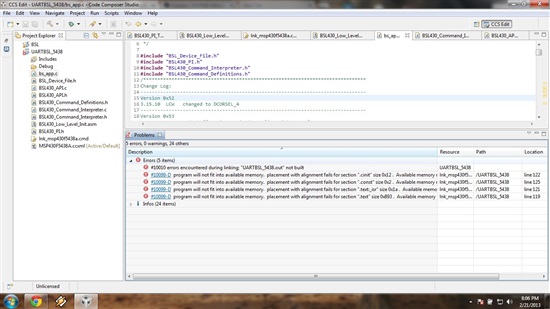Hi....
I need to modify the existing UART based BSL for MSP430F5438A series chip. Basically I wanted to get rid of the entry sequence to invoke the BSL. Can this be eliminated. I want to use the UART peripheral to invoke the BSL instead of the entry sequence by using JTAG pins.
What all things need to modified to achieve this. I am using the 5438A experimenter board for this customization. As there is a USB to UART bridge on board already available. I need to modify the init sequence of peripheral. But when i try to build a project using all the necessary files I get build warnings specially related to "Flash not enough". What all things need to be modified in the linker cmd file as I am using CCS 5.2.
Regards,
Harshit








